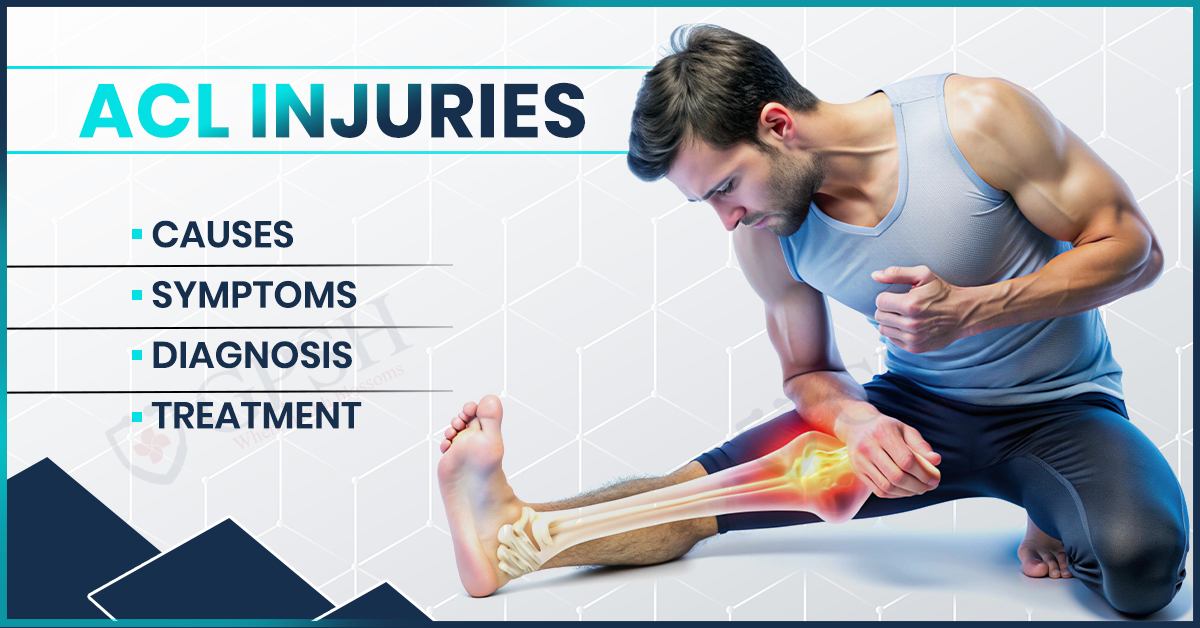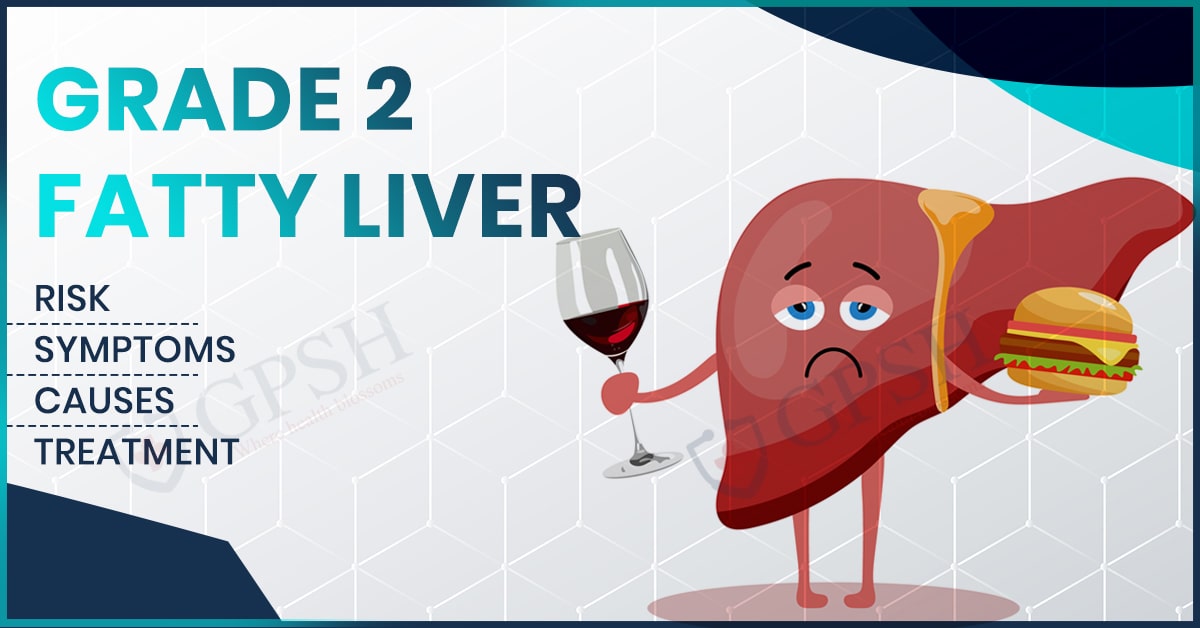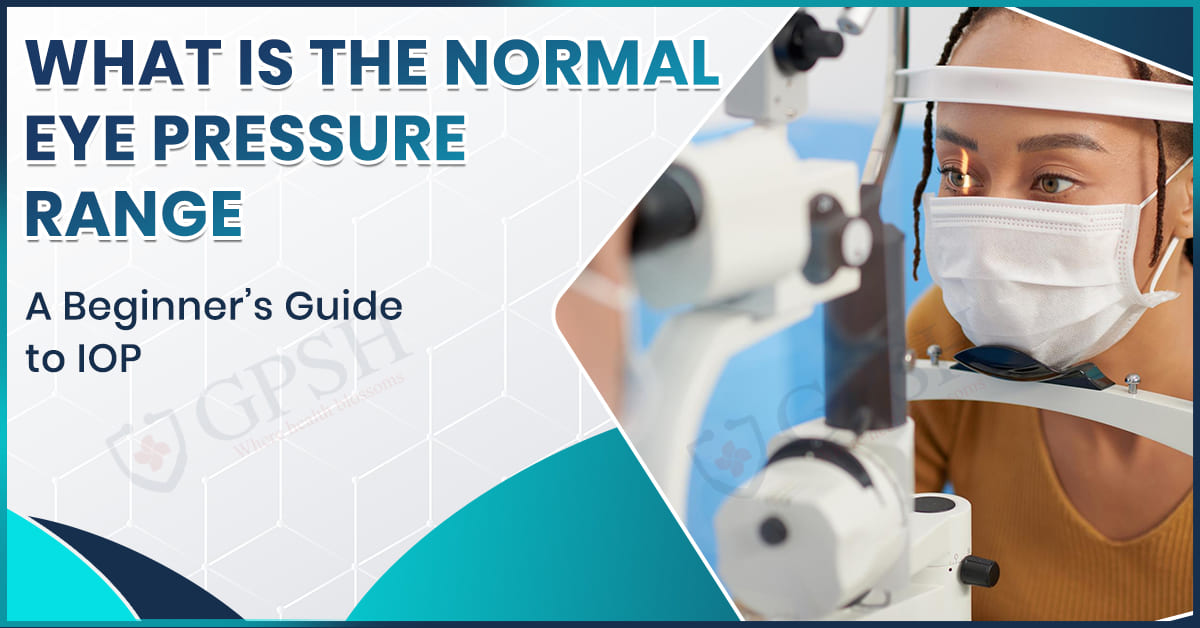Overview
Anterior Cruciate Ligament (ACL) injuries are a common concern among athletes and active individuals, often leading to significant disruptions in mobility and performance. The ACL, a critical ligament in the knee, provides stability and support, making it essential for activities involving sudden stops and direction changes. This article will explore the causes of ACL injuries, ranging from sports-related trauma to degenerative factors.
We will also examine the symptoms, which typically include pain, swelling, and instability. The diagnostic process will be covered, highlighting the importance of imaging techniques and physical examinations. Finally, we will discuss the various treatment options available, including both conservative management and surgical interventions, to aid in recovery and return to normal activities.
What is ACL?
The Anterior Cruciate Ligament (ACL) is one of the four major ligaments in the knee that helps stabilize and control its movement. Located in the center of the knee joint, the ACL connects the femur (thigh bone) to the tibia (shin bone) and plays a crucial role in maintaining knee stability, especially during activities that involve rapid changes in direction, jumping, or pivoting.
The ACL is highly prone to injury for several reasons:
- High-Stress Movements: Activities that involve sudden stops, pivots, or changes in direction put significant stress on the ACL. Sports like soccer, basketball, and skiing, where such movements are frequent, often lead to ACL injuries.
- Anatomical Factors: The ACL has a relatively small and narrow structure compared to other ligaments, making it more susceptible to tears. Its central location also means it is vulnerable to stress from various angles.
- Mechanics and Biomechanics: Poor technique, such as improper landing during jumps or weak muscle control around the knee, can increase the risk of ACL injuries. Additionally, individuals with certain biomechanical issues, such as abnormal foot alignment or muscle imbalances, are at higher risk.
- Gender Differences: Studies have shown that women are more likely to sustain ACL injuries compared to men, partly due to differences in anatomy, hormonal influences, and muscle strength.
Symptoms of ACL Injury
The symptoms of an ACL injury can vary in severity depending on the extent of the damage. Common symptoms include:
- Sudden Pain: Many people experience sharp, intense pain at the time of injury, which may be severe enough to cause immediate discomfort.
- Swelling: Swelling around the knee typically develops within a few hours after the injury. This is due to bleeding into the joint or inflammation.
- Instability: A feeling of instability or weakness in the knee is common. Individuals often describe it as if the knee is “giving out” or unable to support their weight.
- Limited Range of Motion: The knee may become stiff and difficult to move through its full range of motion due to pain, swelling, or structural damage.
- Popping Sensation: Some people report hearing or feeling a “pop” or “snap” at the moment of injury, which can be a sign of a torn ACL.
- Difficulty Bearing Weight: Pain and swelling may make it challenging to put weight on the affected leg, which can impact mobility.
Causes of ACL Injury
ACL injuries can result from a variety of causes, often involving sudden, high-stress movements. Common causes include:
- Sports-Related Trauma: Activities that involve rapid changes in direction, jumping, or sudden stops, such as soccer, basketball, football, and skiing, are frequent causes of ACL injuries. The intense and dynamic nature of these sports puts significant stress on the knee joint.
- Direct Impact: A direct blow to the knee, such as a collision with another player or a fall, can cause an ACL tear. The force of impact can overstress the ligament, leading to injury.
- Twisting Movements: Twisting or pivoting motions, especially while the foot is planted, can place excessive strain on the ACL. This is common in sports where quick directional changes are required.
- Improper Landing Techniques: Incorrect landing techniques from jumps or high-impact activities can increase the risk of ACL injuries. For example, landing with the knee extended or inward can stress the ACL.
- Weak or Imbalanced Muscles: Weakness or imbalances in the muscles surrounding the knee, such as the quadriceps and hamstrings, can reduce support for the ACL and increase the likelihood of injury.
- Inadequate Conditioning or Training: Lack of proper conditioning, flexibility, and strength training can make the knee more susceptible to injuries. Training programs that focus on strengthening the muscles around the knee and improving movement techniques can help reduce risk.
- Previous Injuries: A history of knee injuries can increase the risk of subsequent ACL injuries, as previous damage may affect the knee’s stability and overall function.
you can read also:- Why Exercise is Important for Healthy Bones?
Diagnosis of ACL Injury
Diagnosing an ACL injury involves a combination of clinical evaluation and imaging techniques to assess the extent of the damage. The process typically includes:
- Medical History and Symptoms Review: The doctor will ask about the injury event, symptoms, and any previous knee issues. This helps to understand the context and impact of the injury.
- Physical Examination: During the physical exam, the physician will assess the knee for:
- Swelling and Bruising: Noting the extent of swelling and any bruising around the knee.
- Range of Motion: Evaluating the knee’s ability to move through its normal range without pain or restriction.
- Stability and Function: Performing specific tests to check for instability and the knee’s ability to bear weight. Common tests include:
- Lachman Test: Assesses the amount of forward movement of the tibia relative to the femur.
- Anterior Drawer Test: Evaluates the degree of anterior translation of the tibia.
- Pivot Shift Test: Checks for a sense of shifting or popping in the knee during a controlled movement.
- Imaging Studies:
- X-rays: Used to rule out fractures or other bone-related injuries but cannot directly visualize soft tissue damage like an ACL tear.
- Magnetic Resonance Imaging (MRI): Provides detailed images of the soft tissues in the knee, including the ACL. MRI is the most effective method for confirming an ACL tear and assessing the extent of the injury and any associated damage to other structures in the knee, such as cartilage or menisci.
- Arthroscopy: In some cases, a minimally invasive procedure called arthroscopy may be used. This involves inserting a small camera (arthroscope) into the knee joint through a small incision to directly visualize and assess the ACL and other structures.
Treatment of ACL Injury
Treatment for an ACL injury depends on the severity of the tear, the patient’s activity level, and overall health. The primary options include conservative management and surgical intervention, often followed by rehabilitation. Here’s an overview of the treatment approaches:
Conservative Management
-
- Rest and Activity Modification: Avoiding activities that put stress on the knee, such as running or jumping, helps reduce pain and prevent further injury.
- Ice and Compression: Applying ice packs to the knee and using compression bandages can help manage swelling and pain.
- Elevation: Keeping the knee elevated can assist in reducing swelling.
- Pain Relief: Over-the-counter pain medications, like acetaminophen or ibuprofen, can alleviate pain and inflammation.
- Physical Therapy: A structured physical therapy program can strengthen the muscles around the knee, improve flexibility, and restore range of motion. It focuses on exercises to enhance stability and prevent future injuries.
Surgical Intervention
For individuals with complete tears or those who wish to return to high-level sports, surgery may be recommended. The primary surgical option is:
. ACL Reconstruction: This involves replacing the torn ACL with a graft, which is typically taken from the patient’s own body (autograft) or from a donor (allograft). The surgery is performed arthroscopically through small incisions. Post-surgery, a rehabilitation program is essential to restore knee function and strength.
- Rehabilitation and Recovery
- Post-Surgical Rehabilitation: After ACL reconstruction, a comprehensive rehab program includes:
- Early Recovery: Focuses on reducing swelling, regaining range of motion, and starting gentle strengthening exercises.
- Strengthening Phase: Involves more intensive exercises to build strength in the quadriceps, hamstrings, and other muscles supporting the knee.
- Functional Training: Includes sport-specific drills and functional movements to prepare for a return to activity.
- Return to Activity: Gradual return to sports and high-impact activities is typically advised once full recovery and strength are achieved, often guided by a healthcare professional.
- Post-Surgical Rehabilitation: After ACL reconstruction, a comprehensive rehab program includes:
Prevention of ACL Injury
Preventing ACL injuries involves strategies to enhance knee stability, strength, and flexibility, especially for athletes and active individuals. Effective prevention methods include:
-
Strength Training
- Quadriceps and Hamstrings: Strengthening the muscles around the knee, especially the quadriceps and hamstrings, helps support and stabilize the joint. Exercises such as squats, lunges, and leg presses are beneficial.
- Core and Hip Strength: Strengthening the core and hip muscles can improve overall body control and reduce stress on the knees. Exercises like planks and hip bridges are effective.
-
Proper Technique and Training
- Jumping and Landing Techniques: Learning and practicing proper techniques for jumping and landing can reduce the risk of ACL injuries. Focus on landing with knees slightly bent and aligned over the feet to avoid excessive stress on the ACL.
- Agility and Plyometric Training: Incorporating agility drills and plyometric exercises can improve coordination and control during dynamic movements.
-
Flexibility and Stretching
- Regular Stretching: Incorporate stretching exercises into your routine to maintain flexibility in the muscles around the knee. This helps reduce the risk of strains and injuries.
- Dynamic Warm-Up: Perform a dynamic warm-up before physical activities to prepare the muscles and joints for exercise and reduce injury risk.
-
Use of Proper Equipment
- Footwear: Wearing appropriate footwear for your sport or activity can provide better support and traction, reducing the risk of ACL injuries.
- Protective Gear: In some sports, using knee braces or other protective gear may offer additional support and help prevent injuries.
-
Neuromuscular Training
- Balance and Coordination: Engage in neuromuscular training exercises that enhance balance, coordination, and proprioception. This type of training helps improve the body’s ability to respond to sudden changes in movement.
-
Education and Awareness
- Injury Prevention Programs: Participate in injury prevention programs or workshops that focus on ACL injury prevention. Many sports organizations and teams offer these programs to educate athletes on safe practices.
-
Gradual Progression
- Avoid Overtraining: Gradually increase the intensity and duration of physical activities to prevent overuse injuries and allow the body to adapt safely.
Conclusion
In conclusion, ACL injuries pose a significant challenge to athletes and active individuals due to their impact on knee stability and function. Understanding the causes, symptoms, diagnosis, and treatment options is crucial for effective management and recovery. ACL injuries are typically addressed within the field of Orthopedics, where specialized care and advanced treatment options are available.
For those seeking state-of-the-art treatment, Shekhawati Hospital stands out as a premier facility, offering comprehensive care for ACL injuries. With its cutting-edge technology and expert orthopedic team, Shekhawati Hospital provides an excellent option for individuals looking to achieve optimal recovery and return to their active lifestyles.








